More than 10 years ago the European Space Agency (Esa) launched Rosetta with a plan to slingshot the spacecraft around Earth until it caught up with comet 67P, the final destination of a vessel meant to make human history in outer space. The spacecraft carried a lander, Philae, designed to touch down on the comet, but Philae’s landing did not go quite as planned.
What was supposed to happen
ESA scientists hoped the comet would be a relatively even potato shape with plenty of flat surfaces suitable for landing on the 2.5-mile wide heap of ice, rock, dust and vapours, hurtling along at more than 11 miles per second. Rosetta’s controllers back on Earth tried to aim and time Philae’s release so that the comet’s weak gravity would slowly pull the lander to the site. Scientists had no control of Philae during its descent.
Not far from the surface, controllers would order Philae’s thrusters to fire from on top of the lander, pushing Philae toward the comet. Once on the surface, they would send a command to shoot two harpoons from the lander into the comet’s crust, to prevent bouncing and secure it in place. The harpoons were also meant to counteract the plumes of gas and vapour that could knock Philae around, and will increasingly jet out of the comet as it approaches the sun.
With about 60 hours of battery life, Philae would start snapping photos and doing experiments, and although the comet’s path would occasionally take Agilkia into shadow, solar panels mounted on Philae could recharge the battery and keep the lander busy into March 2015.
What did happen
Comet 67P turned out not to be shaped like a potato, as scientists hoped, and instead had an asymmetrical look “of a rubber duck”. Scientists identified Agilkia, a relatively open area about a third of a square mile as their best landing site, but had to manoeuvre Rosetta with thrusters for longer than expected to get it into the right spot for Philae’s drop.
Before releasing the lander, they discovered early on Wednesday morning that a key thruster designed to press Philae down onto the surface of the comet was not working. They decided to go ahead with the landing anyway and launched the probe from the Rosetta mother ship at 8.35am GMT.
Philae, rotating as it fell toward the surface, landed just about on target. The nitrogen thrusters failed, as expected, but the harpoons did not deploy, and in the extremely low gravity the lander bounced high up above the surface to a different location, where it bounced again. It took about two hours for Philae to settle after its initial touchdown. It came to rest around a kilometre from its intended landing site but the scientists are not yet sure exactly where.
The lander manager, Dr Stephan Ulamec, told the BBC:
We are still not anchored. We are sitting with the weight of the lander somehow on the comet. We are pretty sure where we landed the first time, and then we made quite a leap. Some people say it is in the order of one kilometre high. And then we had another small leap, and now we are sitting there, and transmitting, and everything else is something we have to start understanding and keep interpreting.
Philae has so far lost and regained contact with mission control as expected, but scientists don’t know where exactly the lander is; the pattern of radio signals is one of the ways they’re measuring the two bounces. The first photo ever taken from a comet’s surface shows crags and a rock face, suggesting the lander is either facing the rim of a crater, against a cliff or at the bottom of a hole.
Mission control says the lander is using solar energy, but “we’re getting one and a half hours of sunlight when we expected six or seven”. Philae’s variety of automated experiments have also begun, sending photos and data back through Rosetta to Esa.
What they can try to fix it
Although the landing gear was designed to “hop” Philae if necessary, it’s not clear whether ice screws on the lander’s legs have anchored the craft in such a way to make any movement feasible. A hop could topple the lander or shoot it up off the surface and away into space, as could an attempt to fire the harpoons.
The lander has drills as well, meant to investigate the comet, and scientists are weighing whether to deploy these drills – to secure or nudge the lander and gather data before the battery dies. But for every action there is a reaction, and drilling puts the probe at high risk of falling over.
Philae is “definitely not in the open”, the mission manager, Fred Jansen, told reporters, and if it’s stuck in a ditch then time is running out to perform experiments. With limited access to the sun, plans to use the lander for the next few months will have to change dramatically. Ulamec said the team will try to “modify the orientation” of the solar panels to get more sunlight, and that they’re changing Rosetta’s orbit to improve communication with Philae. Rosetta is also helping triangulate Philae’s location with a radar instrument called Consert.
What if they can’t fix it
The mission goes on as long as it can. Even if Philae turns out to be wedged in a comet’s cranny, experiments on the comet’s gases and compounds will proceed powered by whatever energy the solar panels can provide.
As Dr Geraint Morgan explained to Open University, “we will sniff the comet no matter what happens” – meaning that the probe will still examine molecules drifting up from the surface. Many of the experiments are preprogrammed, and the Philae mission could help determine whether comets brought water to Earth, and whether they seeded our planet with chemical compounds (“organics”) that are the building blocks of life. Comets are ancient remnants of the solar system’s earliest moments, and even 60 hours of data could give a glimpse into what happened as the planets formed (or before they formed). The lander would have to drill to perform some of these experiments, but as time runs out the scientists will probably accept those risks.
Philae may fade beyond human contact in the next few days, but Rosetta will probably keep flying round its comet for two more years, even as the comet spews more and more water, dust and gas, burning up as its orbit (and Rosetta’s) get closer to the sun.
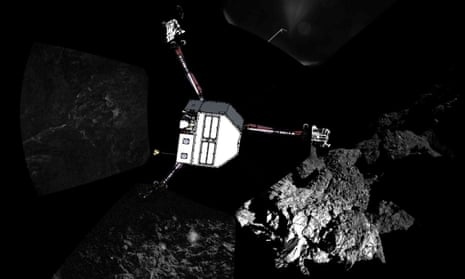

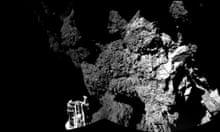
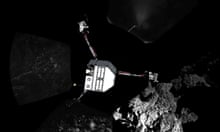
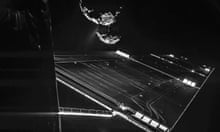

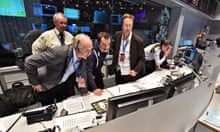
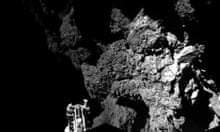
Comments (…)
Sign in or create your Guardian account to join the discussion